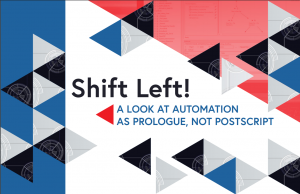Digital Transformation Has 3 Key Requirements for IT
Digital transformation is driving competition in the market. Is your IT team able to drive digital transformation in your organization?

Enterprise Automation and Digital Transformation
Digital transformation is a necessity for businesses and organizations in a variety of industries. If a business in today’s landscape isn’t benefiting from digital transformation, chances are their competition is. Which is why the “How?” behind digital transformation has become such a pressing issue for IT and business leaders.
In the webinar, “3 Essential Keys to Redefining IT Automation for Digital Business Success,” hosted by Enterprise Management Associates (EMA), Dan Twing, President and COO of EMA, and Ben Rosenberg, President of Advanced Systems Concepts, Inc. (ASCI), discussed the major steps, milestones, and hurdles faced by businesses pursuing digital transformation.
The major theme of their discussion was speed: If IT wants to drive business growth, then IT must operate at the pace of business. Businesses today require agility, innovation, and speed, and IT teams need to implement processes and infrastructure capable of achieving similar velocity.
Briefing the audience on the issues facing IT teams, Twing explained that many organizations lack an enterprise IT automation strategy and “operate with outdated tools, a collection of scripts, and really in many cases, stale information, because they don’t have the real-time data that they really want.”
IT organizations interested in achieving the velocity their clients are striving for need to adhere to three key measures.
The Keys to Digital Transformation:
- If it can be automated, it should be automated.
- Coordinate control on an enterprise-class automation solution.
- Embrace speed of change and harness the power of predictive analytics.
Key One: If it can be automated, it should be automated.
This represents a shift in the way infrastructure and operations (I&O) teams regard automation. Traditionally, the goal of automating has been a reduction in costs, for instance, as with many applications of robotic process automation.
Today, however, rapid changes in the digital landscape are demanding a new mindset towards automation. A surge of data is being created by a multitude of digital tools, platforms, and software, and IT professionals can quickly become bogged-down in the repetitive, time-consuming tasks that those digital processes often rely on.
Automate REM (Repetitive, Error-prone, Manual) tasks, first:
- File transfers
- Customer onboarding
- Employee onboarding
- ETL operations
- Virtual machine provisioning
Businesses must leverage intelligent automation for the sake of staying innovative and agile: Automation isn’t about cutting costs, it’s about opening new possibilities.
“Automation really frees the staff to be more creative,” explained Twing. “Once you free them from these repetitive, manual tasks and empower them with visibility and information, IT and business staff can turn their attention to strategically applying digitalization to the business.”
Key Two: Coordinate control on an enterprise-class automation solution
How an IT team automates tasks is just as important as what tasks are being automated. For this, there are two schools of thought, representing modern IT methods and traditional IT methods: automation-as-prologue and automation-as-postscript, respectively.
Automation-as-prologue is a systemic, enterprise-wide approach that is in place prior to the task that is being automated, whereas automation-as-postscript is an ad-hoc method with automation solutions “added-in to solve a specific problem,” explained Rosenberg. “This is what sets the tone and criticality for the overall success – or failure – of an automation strategy.”

How can you develop scalable, flexible IT Automation environments?
It starts with a FREE white paper.
When automation is applied as a point-solution it is usually done through scripts or homegrown tools. This postscript approach works well for individual platforms and tasks, but as an organization grows, an environment of disparate, disconnected scripts and homegrown tools becomes a labyrinth that is difficult to navigate and understand (difficult enough without trying to scale the post-script environment).
This is where IT Automation solutions offer a huge advantage: seamless integration with a wide range of applications, platforms, and technologies, usually with out-of-the-box integrations and APIs/Web Services. This means that IT professionals can coordinate and control their automation environments from a single dashboard, accelerating innovation, the implementation of new tools and processes, and significantly reducing the time IT professionals spend on scripts and repetitive tasks.
“All of this really improves your ability over what you might do with basic scripting, as an example,” said Twing. “When you improve productivity, you get reusability and scalability, and you really get the confidence, then, to go faster.”
“Business and IT workloads can co-exist and even integrate, bringing the best of all worlds together without artificial limitations or required scripting,” explained Rosenberg. “So if you’re running any one of a number of different business systems or platforms, they can all be coordinated and truly interoperate.”
Key Three: Embrace the speed of change and harness the power of predictive analytics.
IT needs agility to quickly respond to new business requests, processes, and issues. To meet this need, IT teams are leveraging intelligent analytics to optimize their workflows and processes, improving IT productivity and speed. These analytics tools are often native to enterprise automation solutions, allowing IT to quickly derive new insights and information about their environments.
Predictive analytics involves running analyses on current and historical data and using those insights to intelligently provision resources. Often combined with machine learning capabilities, predictive analytics is a powerful tool used by IT teams to drastically reduce slack time and idle machine resources.
By leveraging the capabilities of enterprise-wide, holistic IT Automation tools, IT teams can move faster, innovate more, and provide the agility businesses need to stay competitive. By following the three keys listed in this webinar, IT can teach the whole organization “to speak a common automation language,” said Twing.
“You can support the business’s digitalization efforts with faster automation definition, with tools that are DevOps friendly, and you can reduce the number of homegrown tools that you need to build and support. And, you get easier integration of data and apps.”
Efficient, optimized process automation solutions allow IT teams to respond faster to business pressures. But speed isn’t just for speed’s sake: speed is a requirement for agility, for the ability to quickly tackle complicated challenges.
“What do we mean by ‘embrace the speed of change’?” said Rosenberg. “We mean that in addition to adapting to quickly changing business requirements with automation, you can also do the complicated easily. In other words, you can meet complex business challenges and deploy quickly.”
“We’ve seen first-hand what the cost of [not changing] entails,” said Rosenberg. “Basically, it means you become irrelevant, you close your doors.”







